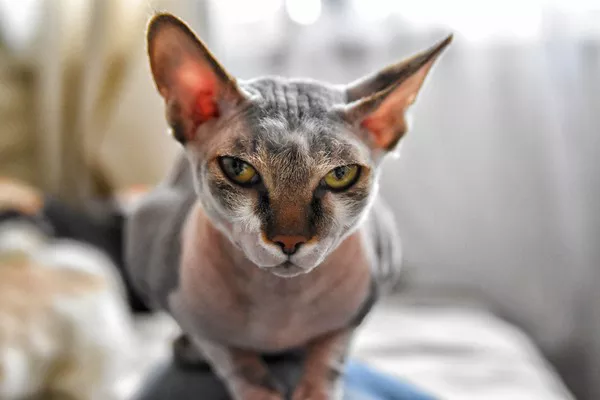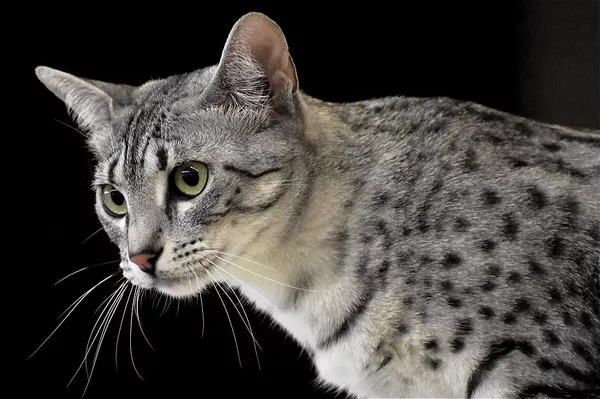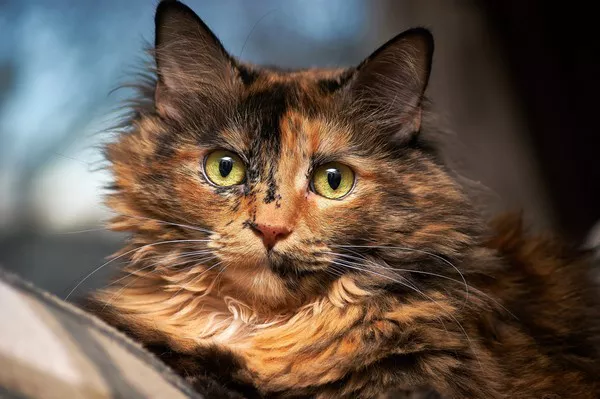Hairless cats, such as the Sphynx breed, are captivating creatures known for their distinctive appearance and unique care requirements. As guardians of these elegant felines, understanding what to feed a hairless cat is crucial for their overall health, well-being, and the maintenance of their hairless coat. In this comprehensive guide, we explore the dietary needs of hairless cats, providing insights into proper nutrition, potential challenges, and dietary considerations to ensure these feline companions thrive.
Understanding Hairless Cat Dietary Needs
Hairless cats, particularly the Sphynx breed, possess a distinct physiological profile that necessitates careful attention to their dietary requirements. Key considerations for their diet include:
a. High Metabolism:
Hairless cats often have a higher metabolic rate compared to their furry counterparts. This increased metabolism requires a nutrient-dense diet to meet their energy needs and support overall health.
b. Skin Health:
Due to the absence of fur, the skin of hairless cats is directly exposed to environmental elements. A diet rich in essential nutrients is essential to maintain healthy skin and prevent issues such as dryness or sensitivity.
c. Lean Body Composition:
Hairless cats typically have a lean body composition with minimal insulation from fur. Providing a well-balanced diet helps maintain their lean physique while ensuring they receive adequate nutrition.
d. Potential Allergies:
Hairless cats may be more prone to food allergies or sensitivities. Selecting high-quality, hypoallergenic cat food can help prevent adverse reactions and promote digestive health.
Choosing the Right Cat Food for Hairless Cats
a. High-Quality Commercial Cat Food:
Opt for commercially available cat food specifically formulated for the unique needs of hairless cats. These diets are designed to provide essential nutrients, including proteins, fats, vitamins, and minerals.
b. Protein-Rich Formulas:
Hairless cats benefit from a diet rich in high-quality proteins. Look for cat food with animal-based protein sources, such as chicken or fish, to support their lean muscle mass.
c. Balanced Nutrient Profile:
Ensure the cat food offers a balanced nutrient profile, including essential fatty acids, vitamins, and minerals. Omega-3 fatty acids, in particular, contribute to skin health and coat luster.
d. Limited Ingredient Formulas:
For cats with known food sensitivities or allergies, consider limited ingredient formulas. These diets minimize the number of potential allergens, reducing the risk of adverse reactions.
Homemade Cat Food: A Consideration for Hairless Cats
a. Consultation with Veterinarian:
Before transitioning to a homemade cat food diet, consult with a veterinarian to ensure the nutritional adequacy of the homemade recipes. Veterinary guidance helps prevent nutrient deficiencies or imbalances.
b. Balanced Recipes:
Craft homemade cat food recipes that offer a balanced combination of proteins, fats, carbohydrates, and essential nutrients. Include ingredients like lean meats, eggs, and cat-safe vegetables.
c. Nutritional Supplements:
Supplement homemade cat food with feline-friendly nutritional additives, such as taurine and omega-3 fatty acids. These supplements support overall health and address specific nutritional needs.
Hydration: The Cornerstone of Hairless Cat Health
a. Access to Fresh Water:
Ensure hairless cats have constant access to fresh, clean water. Adequate hydration is crucial for various physiological functions, including kidney health and temperature regulation.
b. Wet Cat Food Options:
In addition to dry cat food, consider incorporating wet cat food into the hairless cat‘s diet. Wet food contributes to overall hydration and can be particularly beneficial for cats that may be prone to urinary issues.
c. Broth and Water-Rich Treats:
Offer cat-safe broth or water-rich treats to further enhance hydration. These options provide additional moisture and can be especially appealing to hairless cats.
Addressing Dietary Challenges for Hairless Cats
a. Weight Management:
Hairless cats may be prone to weight fluctuations, requiring vigilant weight management. Monitor portion sizes, choose weight-appropriate cat food, and engage in regular play and exercise to support a healthy weight.
b. Dental Health:
Implement dental care practices, such as regular teeth brushing and providing dental treats, to address potential dental health issues. Hairless cats can benefit from maintaining good oral hygiene.
c. Monitoring Allergies:
Stay vigilant for signs of food allergies, including skin irritation, itching, or gastrointestinal upset. If allergies are suspected, consult with a veterinarian to identify and address potential allergens.
Transitioning Cat Food and Introducing New Options
a. Gradual Transitions:
When transitioning to a new cat food, do so gradually to prevent digestive upset. Mix small amounts of the new food with the current food, gradually increasing the ratio over several days.
b. Monitoring Responses:
Observe the cat’s response to the new cat food. Look for signs of acceptance, digestive comfort, and overall well-being. If any adverse reactions occur, consult with a veterinarian for guidance.
Conclusion
In the realm of hairless cat care, nutrition plays a pivotal role in ensuring these feline companions thrive and maintain their radiant health. By understanding the distinctive dietary needs of hairless cats, selecting high-quality commercial cat food or carefully crafted homemade recipes, and addressing potential challenges, guardians can embark on a journey to provide the best possible nourishment for their elegant and unique companions. Nourishing the elegance of hairless cats involves not only meeting their nutritional needs but also creating a bond through shared moments of feeding and care. With a well-rounded approach to feline nutrition, guardians can contribute to the enduring health and vitality of their hairless cat companions.


























